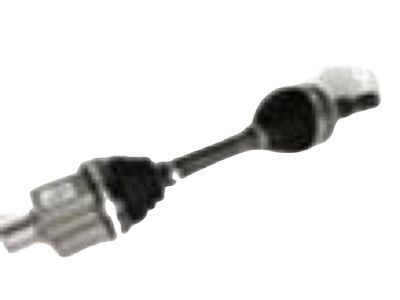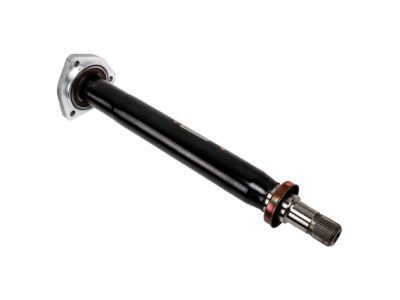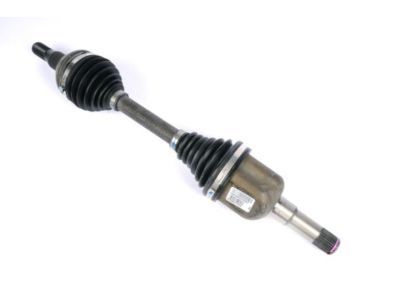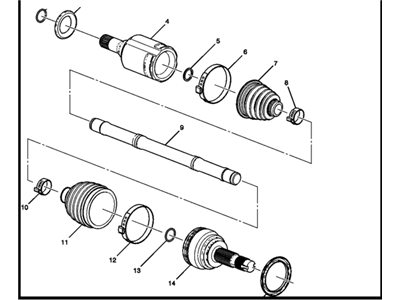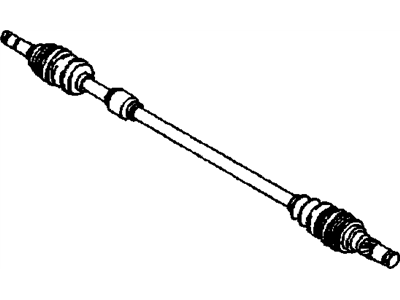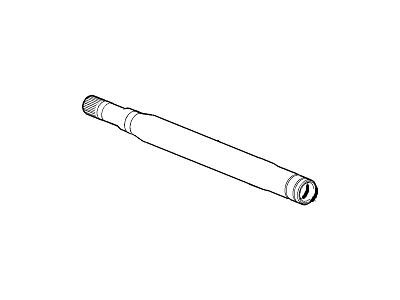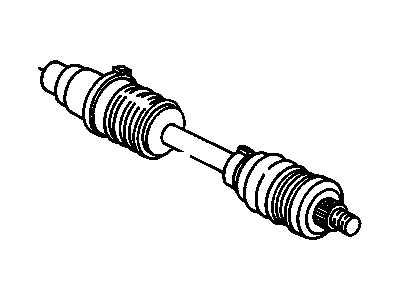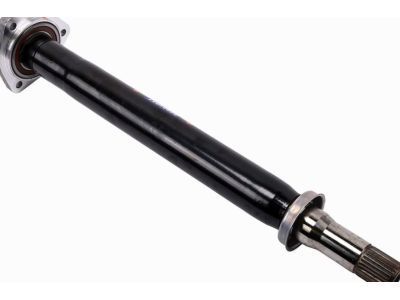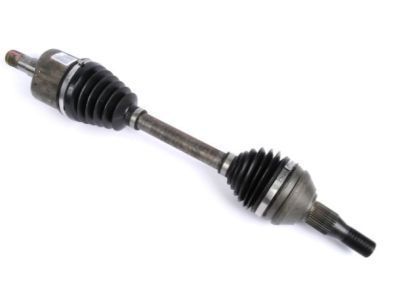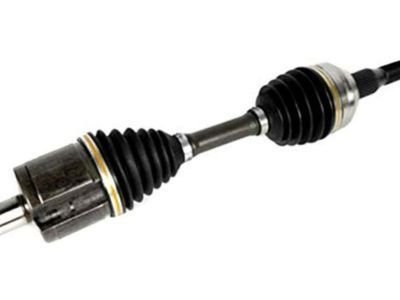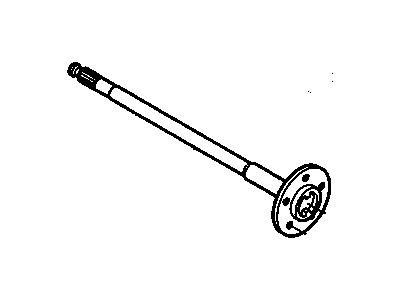My Garage
My Account
Cart
Genuine Chevrolet Impala Axle Shaft
Car Axle Shaft- Select Vehicle by Model
- Select Vehicle by VIN
Select Vehicle by Model
orMake
Model
Year
Select Vehicle by VIN
For the most accurate results, select vehicle by your VIN (Vehicle Identification Number).
30 Axle Shafts found
Chevrolet Impala Front Wheel Drive Shaft Assembly (Rh Proc)
Part Number: 23191340$239.01 MSRP: $474.22You Save: $235.21 (50%)Ships in 1-2 Business DaysChevrolet Impala Front Wheel Drive Intermediate Shaft Assembly
Part Number: 22910264$113.33 MSRP: $180.73You Save: $67.40 (38%)Ships in 1-2 Business DaysChevrolet Impala Front Wheel Drive Shaft Assembly
Part Number: 20831734$212.50 MSRP: $400.92You Save: $188.42 (47%)Ships in 1-2 Business DaysChevrolet Impala Front Wheel Drive Shaft Assembly
Part Number: 20831733$146.41 MSRP: $420.00You Save: $273.59 (66%)Ships in 1-2 Business DaysChevrolet Impala Shaft Assembly, Front Whl Drv Half
Part Number: 84628596$264.23 MSRP: $524.26You Save: $260.03 (50%)Chevrolet Impala Shaft Assembly, Front Whl Drv Half
Part Number: 84628595$276.83 MSRP: $549.24You Save: $272.41 (50%)Chevrolet Impala Front Driver Side Half, Shaft Assembly
Part Number: 84628594$405.64 MSRP: $804.84You Save: $399.20 (50%)Chevrolet Impala Front Wheel Drive Shaft Assembly
Part Number: 22893002$146.12 MSRP: $419.14You Save: $273.02 (66%)Ships in 1-2 Business DaysChevrolet Impala Front Wheel Drive Shaft Assembly (Rh Proc)
Part Number: 22893003$150.07 MSRP: $430.51You Save: $280.44 (66%)Ships in 1-2 Business DaysChevrolet Impala Front Wheel Drive Intermediate Shaft Assembly
Part Number: 22899104$119.10 MSRP: $207.31You Save: $88.21 (43%)Ships in 1-2 Business DaysChevrolet Impala Front Driver Side Half, Shaft Assembly
Part Number: 23336808$146.17 MSRP: $265.77You Save: $119.60 (45%)Ships in 1-2 Business DaysChevrolet Impala Shaft Assembly, Front Whl Drv Half
Part Number: 84628598$294.28 MSRP: $465.09You Save: $170.81 (37%)Ships in 1-3 Business DaysChevrolet Impala Shaft Assembly, Front Whl Drv Half
Part Number: 84628599$298.90 MSRP: $472.45You Save: $173.55 (37%)Ships in 1-3 Business DaysChevrolet Impala Front Wheel Drive Shaft Kit
Part Number: 26082885$30.04 MSRP: $690.87You Save: $660.83 (96%)Ships in 1-2 Business DaysChevrolet Impala Cv Intermediate Shaft
Part Number: 22901057$132.77 MSRP: $209.86You Save: $77.09 (37%)
| Page 1 of 2 |Next >
1-20 of 30 Results
Chevrolet Impala Axle Shaft
Chevrolet Impala Car Axle Shaft is an essential to propel the force from the Differential to the Driven wheels to rotate conveniently in a separate movement. This adds grip especially at the time of cornering, as can be seen from the following figure. Axle Shafts are usually of chrome-molybdenum or carbon steel so as to remain capable of handling the call of being in a vehicle. In Impala models, there has been over the year usage of several types of Axle Shafts; live axle shafts used to bear weight and transmit torque, split axles used for allowing independent wheel rotation. The most significant differences between these types is concerned with the design and working of these; for example, while a full-floating axle carries the appliance weight via the axle casing, a semi-floating axle does so with the help of the shaft. It is important to know these differences in order to preserve the vehicles properties and safety.
Each OEM Chevrolet Impala Axle Shaft we offer is competitively priced and comes with the assurance of the manufacturer's warranty for the part. Furthermore, we guarantee the speedy delivery of your orders right to your doorstep. Our hassle-free return policy is also in place for your peace of mind.
Chevrolet Impala Axle Shaft Parts Questions & Experts Answers
- Q: How do I remove and install a driveaxle on Chevrolet Impala?A: One can start by loosening the front wheel lug nuts and raising the vehicle on jackstands in order to remove the axle shaft. Then, use a large socket and breaker bar to remove the axle shaft/hub nut. The transaxle lubricant may be drained if necessary. Disconnect the tie-rod end and stabilizer link from the steering knuckle. Separate the steering knuckle from the strut. To loosen it from the hub splines, tap at the end of the axle shaft with a soft-faced hammer. Pull out on the steering knuckle in order to detach it from hub and suspend outer end of axle shaft. Check for lubricant leakage around differential seal. Use a pry bar to carefully pry inner joint from the transaxle. Finally, remove axle shaft assembly being careful not to overextend inner joint or damage axleshaft boots. If needed secure hub with a large bolt and washers. Multi-purpose grease must be put around splines of joints when installing axle shaft. Hold out straightly on axle shaft and push it sharply inward to seat axle shaft set ring. To ensure that set ring is properly seated attempt pulling out inner CV joint housing out of transaxle by hand. Clean threads of Axleshaft outer CV joint, and then apply multi-purpose grease onto splines. Guide axle shaft into hub splines then installed new driveshaft/hub nut. Renew suspension fasteners then reconnecting steering knuckle and tie rod end. Axle shaft/hub nut should be tightened according to given torque. Install wheel and lug nuts, then lower vehicle. Finally tighten wheel lug nuts to torque value provided, if necessary add transmission fluid.
- Q: What are the symptoms of worn or damaged CV joints and driveaxle shafts on Chevrolet Impala?A: Power is transmitted from the transaxle to the wheels through a pair of axle shafts. The inner end of each axle shaft is connected to the transaxle, directly splined to the differential side gears. The outer ends of the axle shafts are splined to the axle hubs and locked in place by a large nut. The inner ends of the axle shafts are equipped with sliding constant velocity joints, which are capable of both angular and axial motion. Each inner joint assembly consists of a tripod bearing and a joint tulip (housing) in which the joint is free to slide in-and-out as the axle shaft moves up-and-down with the wheel. The joints can be disassembled and cleaned in the event of a boot failure, but if any parts are damaged, the joints must be replaced as a unit. Each outer joint, which consists of ball bearings running between an inner race and an outer race (housing), is capable of angular but not axial movement. The boots should be inspected periodically for damage and leaking lubricant. Torn CV joint boots must be replaced immediately or the joints can be damaged. Boot replacement involves removal of the axle shaft. Note: Some auto parts stores carry "split" type replacement boots, which can be installed without removing the axle shaft from the vehicle. This is a convenient alternative; however, the axle shaft should be removed and the CV Joint disassembled and cleaned to ensure the joint is free from contaminants such as moisture and dirt which will accelerate CV Joint wear. The most common symptoms of worn or damaged CV joints, besides lubricant leaks, are a clicking noise in turns, a clunk when accelerating after coasting, and vibration at highway speeds. To check for wear in the CV joints and axle shafts, grasp each axle (one at a time) and rotate it in both directions while holding the CV joint housings; feeling for play indicating worn splines or sloppy CV joints. Also check the axle shafts for cracks, dents, and distortion.
Related Chevrolet Impala Parts
Browse by Year
2020 Axle Shaft 2019 Axle Shaft 2018 Axle Shaft 2017 Axle Shaft 2016 Axle Shaft 2015 Axle Shaft 2014 Axle Shaft 2013 Axle Shaft 2012 Axle Shaft 2011 Axle Shaft 2010 Axle Shaft 2009 Axle Shaft 2008 Axle Shaft 2007 Axle Shaft 2006 Axle Shaft 2005 Axle Shaft 2004 Axle Shaft 2003 Axle Shaft 2002 Axle Shaft 2001 Axle Shaft 2000 Axle Shaft 1996 Axle Shaft 1995 Axle Shaft 1994 Axle Shaft 1985 Axle Shaft 1984 Axle Shaft 1983 Axle Shaft 1982 Axle Shaft

